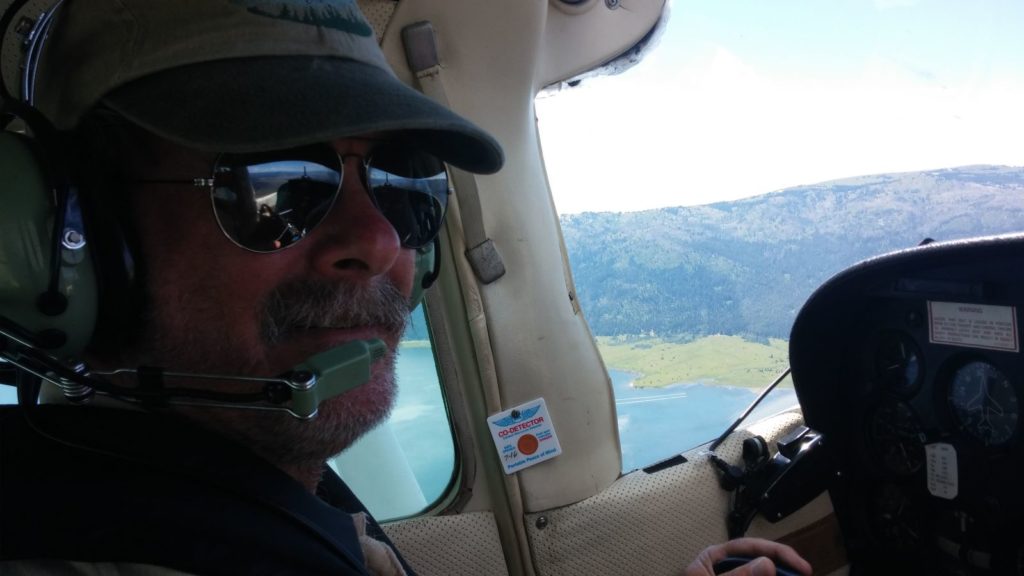WORTH THE READ: RON KELLER GUEST EDITORIAL
Our many RAF supporters have such vast and varied experience, and we’re capturing some of their words of wisdom to share with you. This month’s guest editorial is by Ron Keller, the RAF’s New Mexico Liaison.
My interest in aviation started as a child on our small farm in Ohio. When I saw an airplane fly overhead, I always wondered what the world looked like from up there. My first introduction to aviation was during my enlistment in the US Air Force, as an aircraft instrument systems specialist, maintaining fixed and rotary-wing aircraft at Kirtland AFB in Albuquerque. After my enlistment, I continued the profession at Kirtland, then designed, constructed and maintained electrical systems on Cockpit Procedure Trainers for the same group.
But I missed working on real aircraft, so I obtained a full-time position with the NM Air National Guard and maintained electrical and avionics systems on several aircraft, including F-16s. As really good luck would have it, the FAA needed experienced electronics technicians, and I was hired as a radar technician at Albuquerque ATCT. After 9/11, I was promoted to maintenance coordinator for radar, ILS, VOR, and communications. I retired from federal civil service in 2011. For the next three years I served as aviation safety and education administrator for the NM Aviation Division, until my wife retired.
My father-in-law was a CFII, so I started flying lessons through the Air Force Aero Club in Albuquerque and earned my private pilot certificate in 1984. He helped me select my first airplane, a 1955 Cessna 170B, and he checked me out for my tailwheel endorsement.
Soon, I started landing at a backcountry airstrip next to property my in-laws owned. When the New Mexico Pilots Association formed a backcountry group in 2010, I volunteered to help former RAF NM Liaison Larry Filener, and met the RAF. We teamed up with many dedicated volunteers to begin improving Negrito, a USFS airstrip. The District Ranger was pro-aviation and allowed us to get to work. Because we were able to prove our worth as a volunteer team with a strong RAF-NMPA partnership, we were allowed to continue making improvements and having fly-ins. In 2014 we formed the New Mexico Airstrip Network, 13 partners who support recreational aviation opportunities. The RAF is a highly valued partner.
In 2016 I was asked to become an RAF Liaison. I was relieved that most of the duties were tasks I’d already been doing for several years. My wife Mary Ann was so impressed with the RAF way of doing things, she supported me becoming a Liaison as a great way for me to “give back” to aviation.
As Liaison, I work with private landowners, the State of New Mexico, US Forest Service, Bureau of Land Management, and local governments. There are challenges common to each agency. The turnover rate among key personnel is substantial. This makes it necessary to make new introductions and establish good working relationships.
Airstrip maintenance is a “dirty job,” so I bought a tractor, mower, disc, and seeder. A great pilot friend donated a box blade. A custom drag was also added to the list. Mowing, dragging, and replacing windsocks was accomplished, and many rewarding projects followed, such as installing an accessible vault toilet at Negrito. In 2020 we received permission from the USFS to rehabilitate Rainy Mesa, an airstrip that had been dormant for over 40 years. Small trees had to be cleared, and we really worked the tractor, blade and drag. Several work parties later, and with a dedicated core of volunteers, Rainy Mesa was registered and reopened.
In 2022, after the RAF/Gila NF Challenge Cost Share agreement was signed, we rehabilitated Sacaton airstrip after four decades of dormancy. A good pilot friend and I put our tractors and blades to work, along with another great crew. It was registered and charted and is a gem of a location just outside a wilderness boundary. Before the delivery of the new vault toilet, I drove the route and measured 11 cattle guards to ensure the semi-truck and trailer could fit through them all.
Being an RAF Liaison is challenging sometimes, but always rewarding. I particularly enjoy overseeing a project from start to finish like the rehabilitation and reopening of airstrips. I also cherish the solitude available when I am mowing all six USFS-managed airstrips on the Gila National Forest. No matter how big an airstrip project may be, it is the satisfaction of knowing it will make a difference for generations to come.
In closing, I obviously enjoy flying in the backcountry. Also, very rewarding are the opportunities to make a difference in “preserving, improving, and creating airstrips for recreational access.”

Ron learned to fly through an Air Force aero club, and in 1984 at the age of 27, he earned his private certificate. He has been involved with the New Mexico Airstrip Network (NMAN) since its beginning. He belongs to RAF, NMPA, USPA, IAA, AOPA, and EAA. He retired from his FAA career in electronics and has served as the Aviation Safety and Education Administrator for New Mexico Aviation Division.
Submitted April 29, 2025

Ron opened opportunities for city pilots like me and my daughter to explore the back country in our Cessna 182. I have been to several flyins, and Ron is ALWAYs there to greet the pilots who love New Mexico. We are so lucky to have him.
I’ve known Ron for some years now, he is the type of personality that makes the RAF so successful. If you ever run into him say hello, he’ll always have a kind word and is always willing to share an interesting story of where he’s restoring, or maintaining a backcountry airstrip! NM and the RAF have a truly committed individual in Ron that brings a lot to the RAF mission!
Good article and impressive background Ron!
Sparky
Ron is fabulous. I have worked with him as an NMPA backcountry member for many years. I can say that we all pray for his continued good health since he is irreplaceable for all he does for the New Mexico airstrips and flying community.
THANKS SO SO MUCH Ron.
Thank You all for the kind words! It really is a Team effort. The Iditarod is not won by just the lead dog.